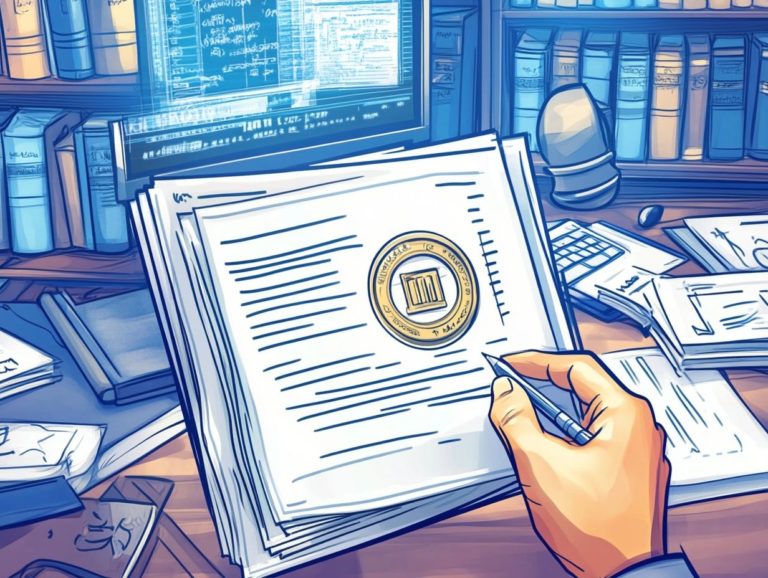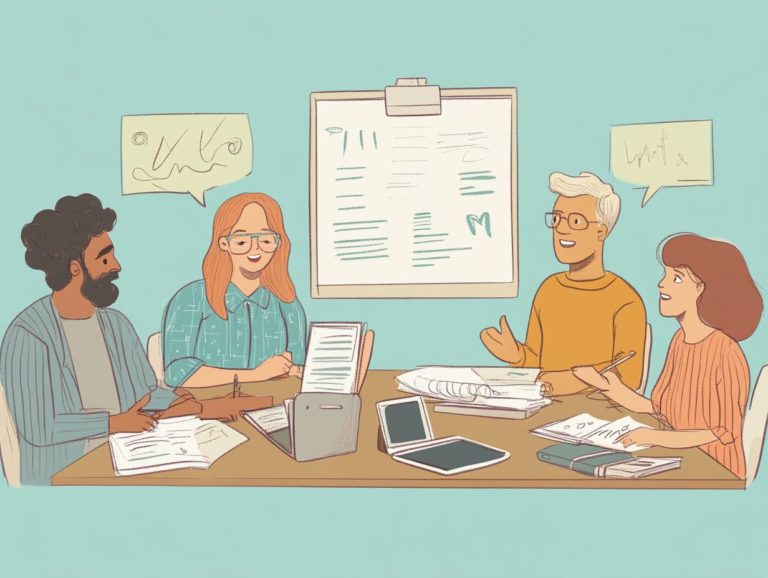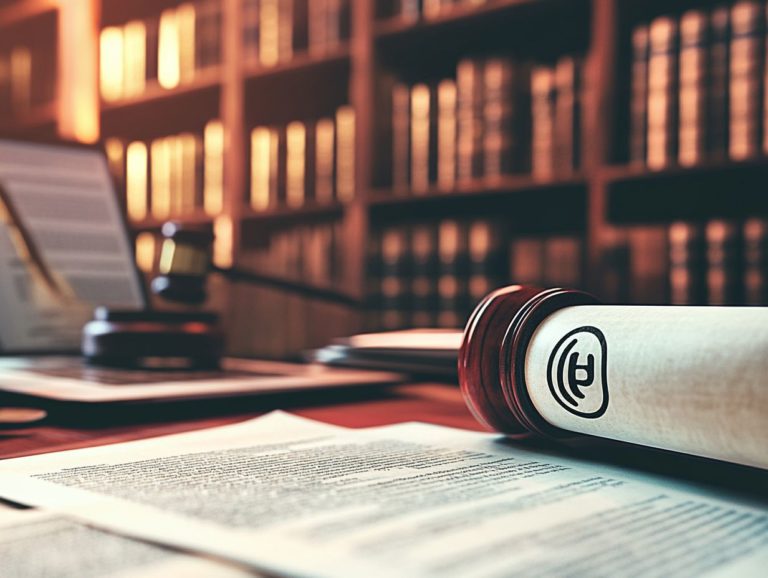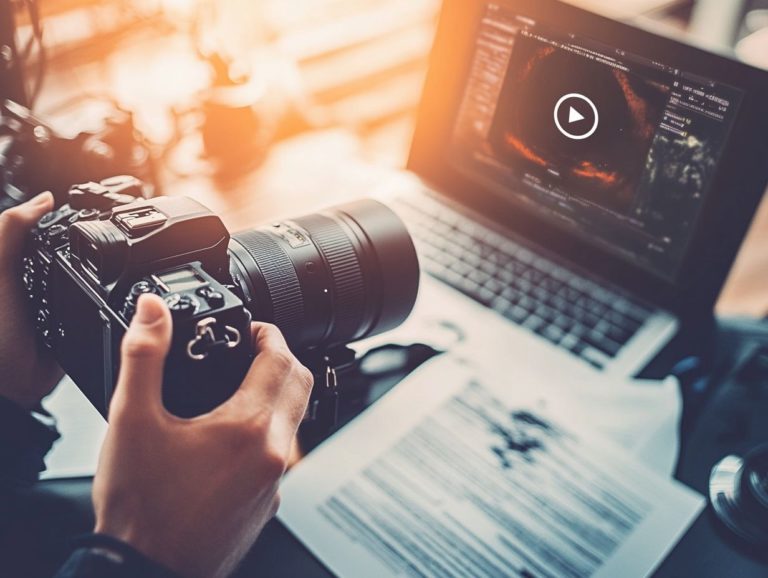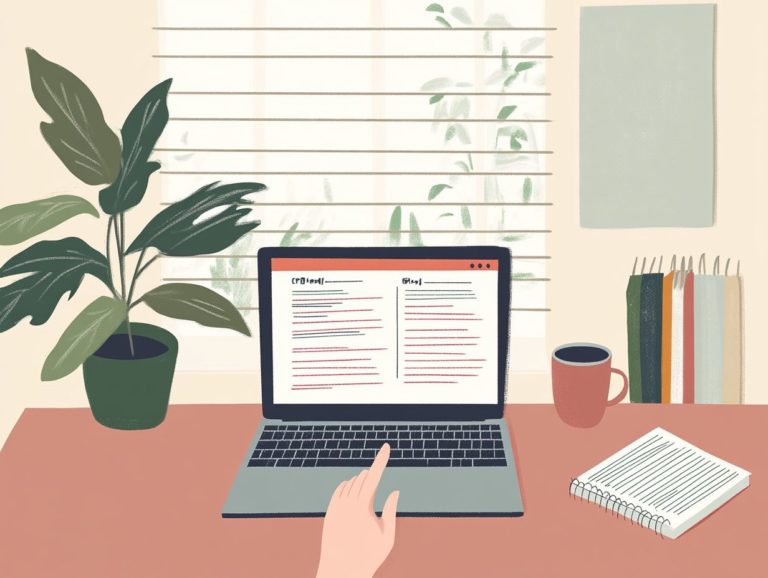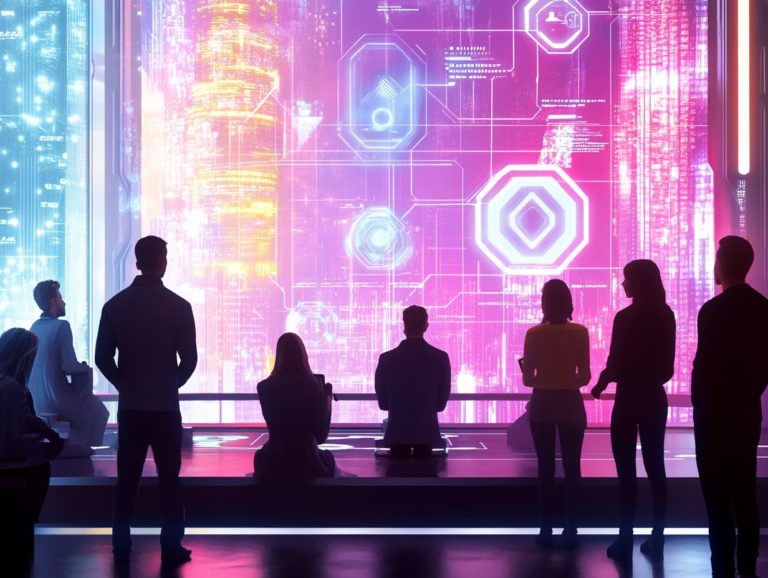Exploring Copyright Law in the United States
Copyright law serves as a vital safeguard for creators, ensuring their rights are protected and their work remains free from misuse.
This article delves into the history of copyright law in the United States, spotlighting significant milestones that have molded its development. You’ll discover the various types of creative works that qualify for protection, the ownership rights associated with them, and the duration of these rights.
The discussion also navigates the complexities of copyright infringement, fair use, and the subtleties involved in utilizing copyrighted material.
Jump in and discover how copyright law affects you!
Contents
Key Takeaways:
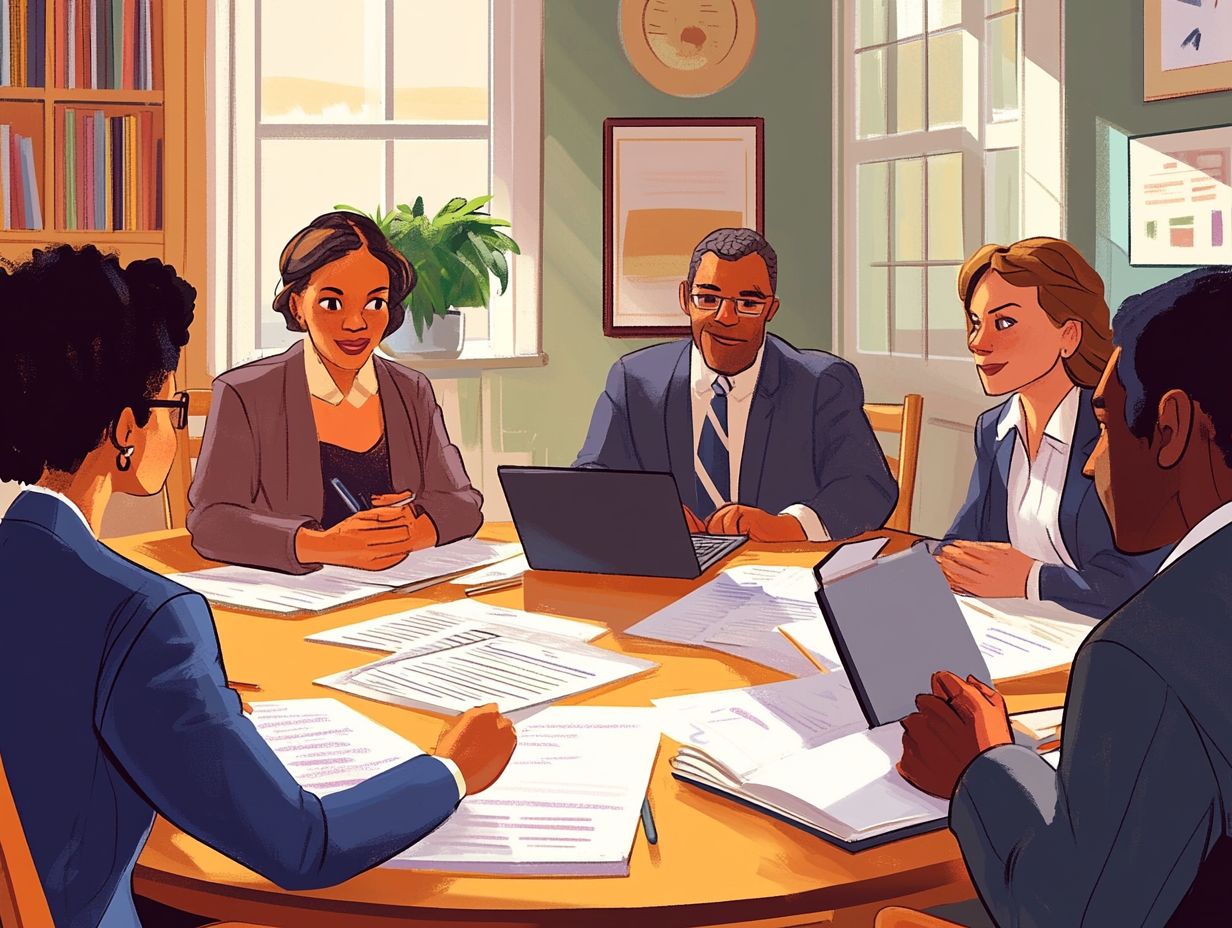
Copyright law in the United States has evolved over time, with key developments such as the Copyright Act of 1976 and the Digital Millennium Copyright Act. Creative works such as literary, musical, and visual arts are protected by copyright law in the US. To navigate these complexities, it is crucial to explore understanding copyright in international contexts, as fair use allows for limited use of copyrighted material without permission, but it is important to understand the scope and limitations of this exception.
What is Copyright Law?
Copyright law serves as a strong legal system designed to protect your original works of authorship, granting you exclusive rights to your creative expressions. This law spans a diverse range of creative works, from literature to music and art, ensuring that you can protect your creations while maintaining control over how your works are used, distributed, and reproduced.
In the U.S., the evolution of copyright protection has been significant. It has been shaped by various acts and amendments that influence both creators and users alike. This evolution reflects the changing nature of artistic expression and the challenges that arise from technological advancements.
Landmark cases, such as Copyright Office v. Ak visiting, have underscored the necessity of originality in determining eligibility for copyright protection.
By fostering an environment where creativity can thrive, copyright law not only incentivizes artistic endeavors but also stimulates economic growth, allowing you to monetize your works effectively.
As society navigates the complexities of digital media, grasping the nuances of copyright law becomes increasingly crucial. The principles of fair use and public domain are also crucial in balancing your rights as a creator with the needs of the public, nurturing a vibrant cultural landscape that benefits everyone.
History of Copyright Law in the United States
The history of copyright law in the United States takes you back to the early days of the Republic. When the U.S. Constitution was ratified in 1788, it gave the power to Congress to create copyright laws aimed at promoting the progress of science and useful arts.
This reflected the framers’ intent to encourage creative expression while safeguarding the rights of authors and inventors. As you explore this evolution, you’ll encounter significant legislative milestones, from the Statute of Anne to the Copyright Act of 1976.
Each of these pivotal moments illustrates the dynamic interplay between technological advancements and the ongoing need for effective copyright protection.
Key Milestones and Developments
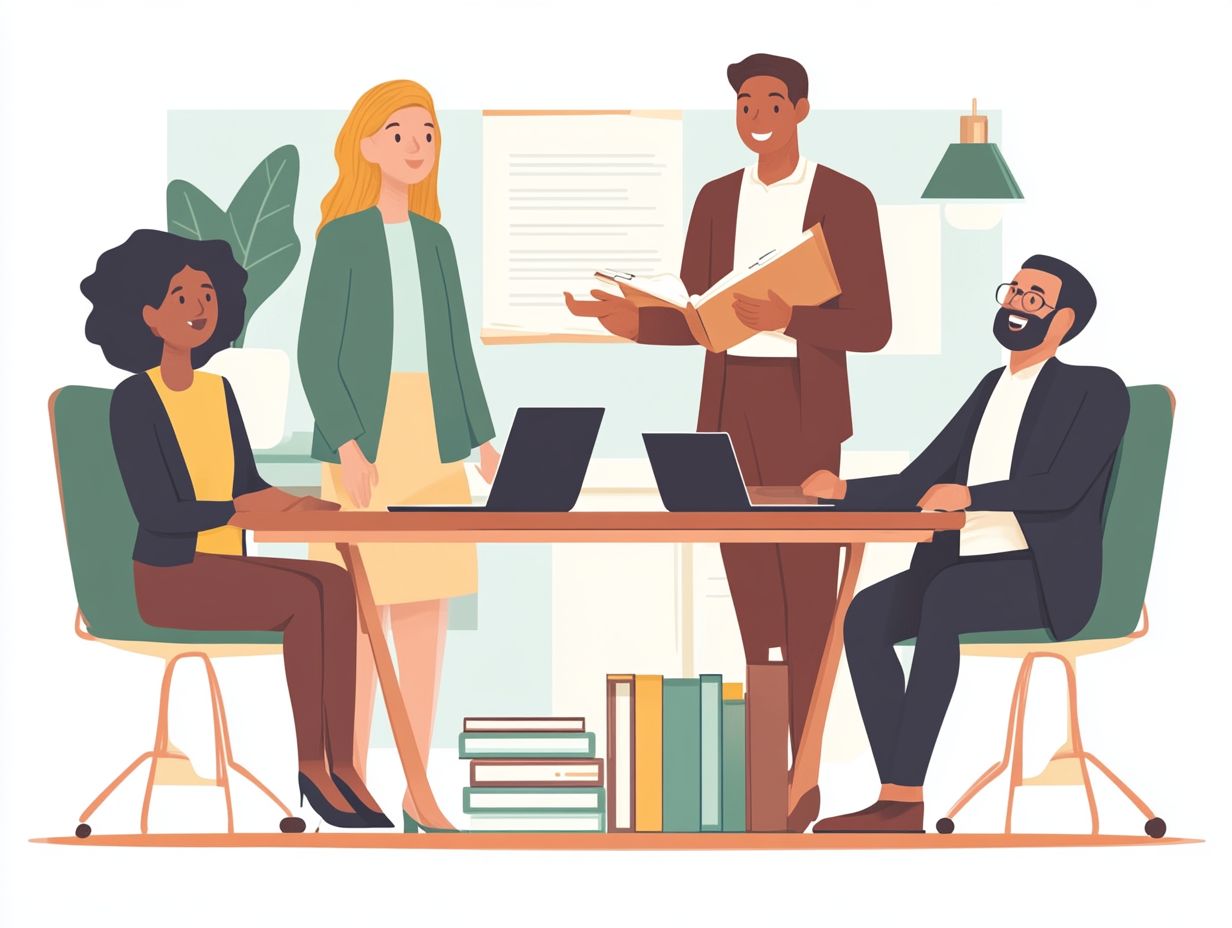
Key milestones in U.S. copyright law showcase the dynamic nature of intellectual property, with landmark moments like the Copyright Act of 1976 laying the groundwork for modern copyright protection.
This act introduced crucial elements such as statutory damages, which are predetermined amounts that can be awarded in copyright infringement cases, and the requirements for copyright registration. It also signified a pivotal shift toward stronger protections for creators, recognizing the value of their creative outputs in an increasingly digital economy.
Following this, significant milestones emerged, including the Digital Millennium Copyright Act (DMCA) of 1998, which tackled the unique challenges posed by the internet, bolstering defenses against digital piracy.
These legislative changes not only fortified the rights of authors and artists but also equipped the public with vital resources to understand copyright timelines and potential damages.
Delving into these developments illuminates the fundamentals of copyright law and underscores the necessity of protecting creative expression in our ever-evolving world.
Copyrightable Works
Copyrightable works encompass a rich array of creative expressions, from literary masterpieces to musical compositions and artistic endeavors.
By securing copyright protection for original expressions fixed in a physical form like paper or digital files, you protect the rights of creators. This robust legal framework helps culture grow.
It promotes the dissemination of creative works, encouraging artistic expression and fostering innovation in the creative landscape.
Types of Creative Works Protected by Copyright
A wide range of creative works is safeguarded under copyright law, spanning literary masterpieces, music, visual arts, and even software. This spectrum includes not just novels and poetry, but also plays, choreographies, and audiovisual creations, showcasing the rich tapestry of human expression.
The visual arts encompass everything from paintings and photographs to sculptures, while the world of music covers compositions, lyrics, and recordings.
In our digital age, unique challenges and opportunities have emerged, with software code and online content also finding their rightful place under the copyright umbrella.
There are exceptions in this system; concepts like fair use allow for limited use of protected works without permission, fostering creativity and dialogue especially in educational and transformative contexts.
Striking a balance between protecting artists and encouraging innovation is essential in a society that flourishes on diverse forms of expression.
Copyright Ownership and Duration
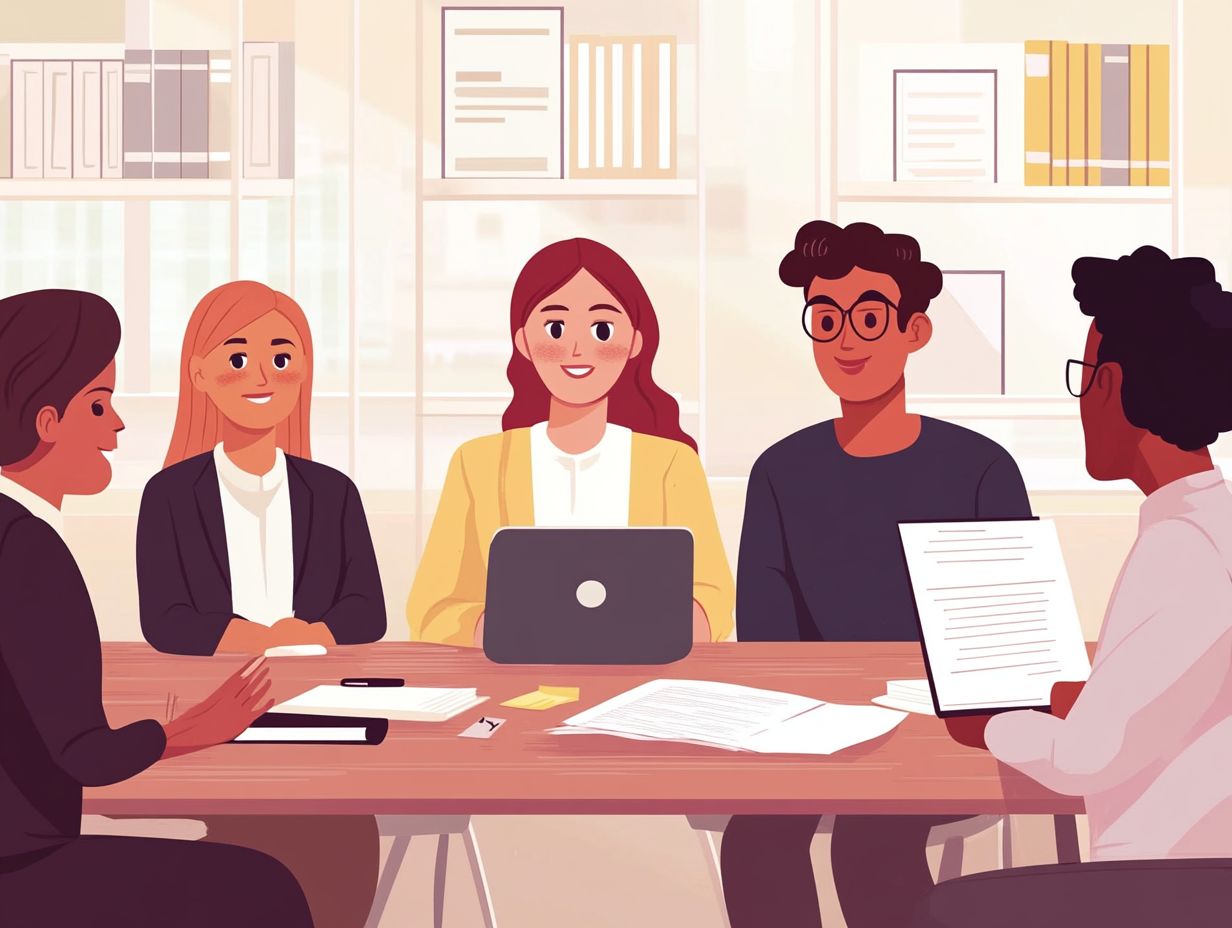
Copyright ownership pertains to the legal rights bestowed upon you as the creator or copyright owner of an original work. Typically, ownership is granted to the first individual who creates or fixes the work in a tangible medium.
It’s essential for you to grasp the implications of copyright duration. This duration dictates how long your copyright protection remains in effect before your work transitions into the public domain. This understanding significantly influences both your rights as a copyright owner and the accessibility of your creative works.
Who Owns the Rights to a Copyrighted Work?
Determining the ownership of rights to a copyrighted work is fundamental in copyright law. Typically, the first owner is the individual or entity that created the work unless those rights are transferred or assigned, a process that can be formalized through copyright registration.
You must understand copyright ownership it s key to protecting your work! Understanding the intricacies of copyright ownership is crucial not just for creators but also for anyone involved in the distribution or adaptation of such works.
The copyright registration number serves as vital legal evidence of ownership, providing you with a clear record that can bolster your claims in any disputes.
It gives you the power to assert your rights, including the ability to pursue legal action for infringement if your work is used without permission. By grasping these principles, you can confidently navigate the complex landscape of copyright claims and better protect your intellectual property.
How Long Does Copyright Last?
Copyright duration pertains to the length of time a work enjoys protection under U.S. copyright law. Generally, this spans the life of the author plus 70 years, after which the work gracefully transitions into the public domain, becoming freely accessible for public use.
This framework has undergone considerable evolution over the years, shaped by pivotal copyright acts such as the Copyright Act of 1976 and the Sonny Bono Copyright Term Extension Act. Initially, works enjoyed protection for a much shorter period, but relentless advocacy from creative industries pushed for these extensions.
Several factors such as the type of work, whether it was published or unpublished, and the author s country of origin can significantly influence the duration of copyright.
The discourse surrounding fair use carries significant weight, permitting limited use of copyrighted material without obtaining permission while striving to balance the interests of both creators and the public. As works enter the public domain, they serve as a catalyst for further creativity and innovation.
Copyright Infringement
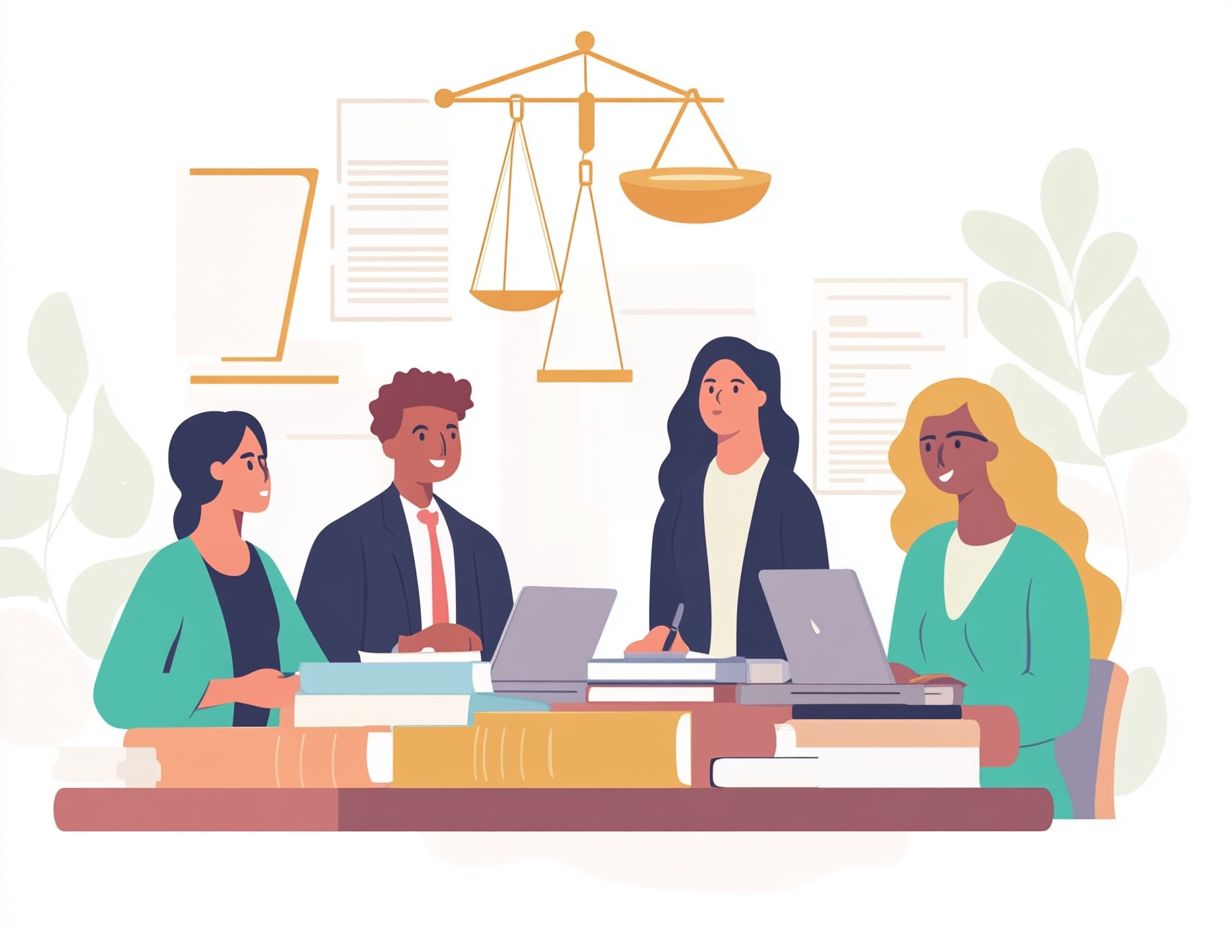
Copyright infringement occurs when someone violates the exclusive rights of a copyright owner. This happens through unauthorized use, reproduction, or distribution of copyrighted materials, which can lead to copyright claims against you.
Understanding copyright exceptions, like fair use, is crucial. Knowing these details helps protect your interests and shows respect for creators’ rights.
What Constitutes Copyright Infringement?
Copyright infringement is any unauthorized use or reproduction of a copyrighted work that violates the owner’s rights. This includes copying, distributing, or adapting someone else’s work without permission.
Unauthorized use undermines the efforts of artists and authors. It can also lead to financial losses and reduce their motivation to create.
Infringement can occur through:
- Illegally downloading music,
- Using images without proper licensing,
- Reprinting texts in ways that violate copyright laws.
The consequences for infringers can be severe. They may face civil lawsuits, hefty fines, and even statutory damages that can reach millions.
Fair Use and Exceptions to Copyright Law
Fair use is an important part of copyright law. It allows limited use of copyrighted material without needing permission from the copyright owner.
This exception balances creators’ rights with the public’s interest in accessing artistic expression.
When is it Permissible to Use Copyrighted Material?
Using copyrighted material can be permissible under specific circumstances defined by copyright law, particularly through the fair use doctrine. This doctrine allows certain usages for purposes such as criticism, comment, news reporting, teaching, scholarship, or research.
It s essential to understand that the fair use principle isn t a blanket permission; rather, it s a nuanced guideline that seeks to balance the rights of creators with the interests of the public. For instance, educators often use this doctrine when incorporating multimedia in classroom settings, enabling students to engage with content meaningfully.
A film critic can analyze a few scenes from a movie to provide in-depth commentary, showcasing how creativity can thrive even within legal boundaries. By exploring these scenarios, you can appreciate how the interplay between intellectual property rights and creative expression fosters a vibrant cultural landscape that benefits both artists and the public.
Frequently Asked Questions
What is copyright law?
Copyright law is a legal framework that grants exclusive rights to creators and authors of original works. It allows them to control the use and distribution of their creations for a specific period.
How is copyright law enforced in the United States?
Copyright law in the United States is enforced through the federal court system. The United States Copyright Office also plays a role in registering copyrights and providing information about copyright law.
What types of works are protected by copyright law in the United States?
Copyright law protects a wide range of original works, including literary, musical, and dramatic works, as well as visual, audiovisual, and architectural works. It also covers computer software, digital content, and other creative expressions.
What are the rights granted to copyright holders?
Copyright holders have the exclusive right to reproduce, distribute, publicly display, publicly perform, and create new works based on their original creations. They can also authorize others to use their works through licensing agreements.
How long does copyright protection last in the United States?
For works created after January 1, 1978, copyright protection typically lasts for the life of the author plus 70 years. For anonymous, pseudonymous works, and works made for hire, it lasts for 95 years from publication or 120 years from creation, whichever is shorter.
Are there any limitations or exceptions to copyright law in the United States?
Yes, there are limitations and exceptions, including fair use, which allows for the use of copyrighted material for criticism, comment, news reporting, teaching, scholarship, and research. Limitations also exist for libraries, archives, and educational institutions, along with specific exemptions for parody and academic uses.

